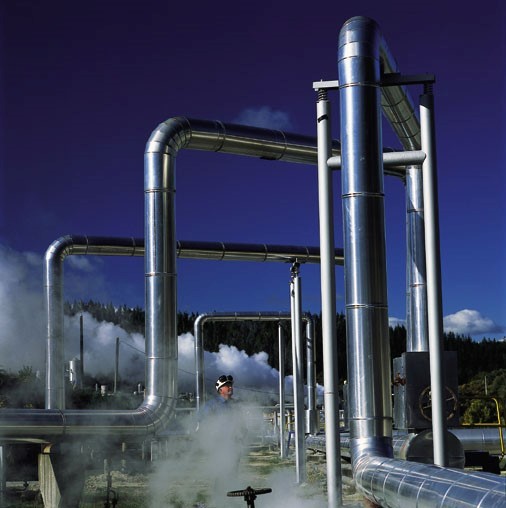The Geothermal Institute’s reservoir modelling team has a long history of involvement with Contact Energy Ltd. (CEL) as they have been carrying out modelling studies of Wairakei-Tauhara and Ohaaki since the 1990s. As availability of data has improved and computing processing capability has increased the models have become more complex but also much more accurate. The models of these geothermal fields are now matching the pre-exploitation, natural states and the production history of the systems very well.
Wairakei-Tauhara is a challenging field to model because of the long production history (1958 to present) and the large quantity of data available. Also the interaction between the deep production reservoir and shallow pressures, which affect surface activity and subsidence, is difficult to accurately reproduce. In order to match the behaviour of this shallow zone 3 dimensional modelling was developed to include the unsaturated vadose zone above the water table, by using an air/water equation of state.
Ohaaki has the extra complexity of containing a relatively large amount of carbon dioxide. The Geothermal Institute pioneered innovative modelling techniques in order to cope with the complications of the Ohaaki field.
The advanced models developed for these complex geothermal sites are used by CEL for field management and planning purposes. The 3 dimensional modelling of Wairakei-Tauhara supports management decisions and was an important part of CEL’s successful application in 2010 for resource consents for the Tauhara 2 project. The modelling study showed the effects of different production and injection strategies. The innovative techniques developed for the Ohaaki field assists in planning for future sustainable productive. The results of which were used by CEL in gaining renewal of their resource consent for Ohaaki in 2013.
Geothermal Institute
Modelling of Wairakei-Tauhara and Ohaaki
Contact Energy





